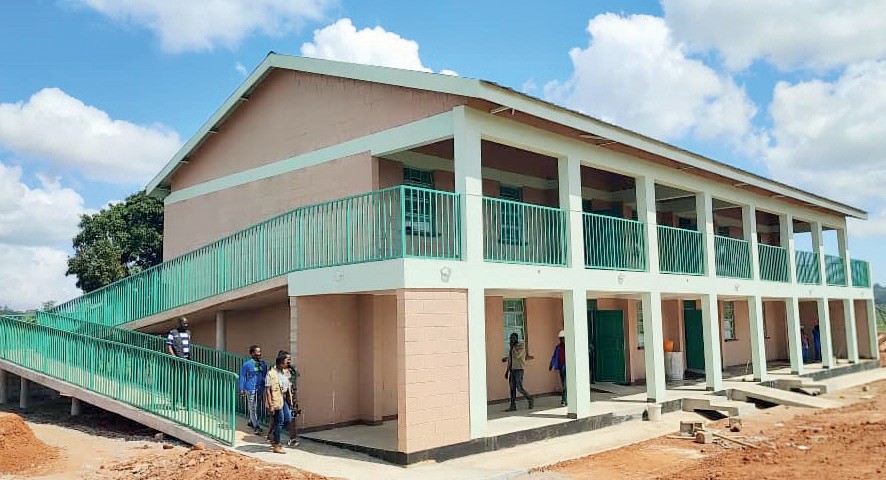By James Chavula
Copyright mwnation

Malawi’s first two-storey public primary school appears on course to admit the first learners next Monday.
Thyolo Boma Primary School, surrounded by sprawling tea fields, is designed to enrol 240 boys and girls.
Thyolo District Council director of public works Isaac Mdindo says the spot aptly exemplifies the land crisis the new design seeks to lessen.
“The land is a gift from Conforzi Tea Estates and the emerging building is funded by performance-based grants from Gesd, the Governance-Enabled Service Delivery Project financed by the World Bank through the National Local Government Finance Committee. The school block is almost 99 percent complete and will start with Standard One to Four and expand into a full primary school in the near future,” he says.
Gesd provides financial rewards for all 28 district councils based on scores for services delivery, accountability and responsiveness.
Construction of the pacesetting junior primary school, with classrooms downstairs and upstairs, got underway on August 14 2024.
“It’s the first of its kind. We expect other districts to emulate this design to save land,” says Mdindo.
Thyolo’s expansive colonial tea plantations have pushed clustered settlements to barren hills.
This illustrates Malawi’s shrinking land size per person amid rapid population growth.
The worsening population pressure has given rise to fierce land disputes between landless locals and tea planters.
In the populous villages, three generations—grandparents, their children and grandchildren—share crowded homes with few ridges that cannot produce a bag of maize to feed them for two to three weeks.
The pressure is felt by learning institutions beyond the tea-growing region.
Lack of space for expansion forces both rural and urban schools to turn sports grounds into construction sites, depriving learners of open playfields for physical exercises, relaxation and bonding.
The brains behind Thyolo Boma Primary School envisage skywards architecture slowing land depletion.
Two-storey schools could be nothing to write home about in developed countries, but Thyolo District Council director of planning and development Thokozire Munthali Chingeni says it signals an ambition to put limited public land to good use.
“Thyolo has no land to waste. The new school is a centre of excellence, an example of what we can do to save public land and use it wisely. We want to extend this idea beyond Thyolo,” she says.
The junior primary school and two staff houses are engulfed by tea growers’ clustered houses, with rusty roofs and cracked walls, where nine-year-old son, Blessings Ligomeka wishes to enrol “upstairs”.
“I like the new school. It has more room to play,” says Standard One pupil from Namate Primary School in the southwestern district.
He dreams of becoming a doctor.
His mother Mervis Jackson, 24, says she would love him to learn at the modern school.
“Obviously, he will be heartbroken to return to his rural school. Every child needs a friendly learning environment,” she says.
Thyolo District has a population of about 459 000 covering about 1 715 square kilometres, according to the National Planning Commission.



